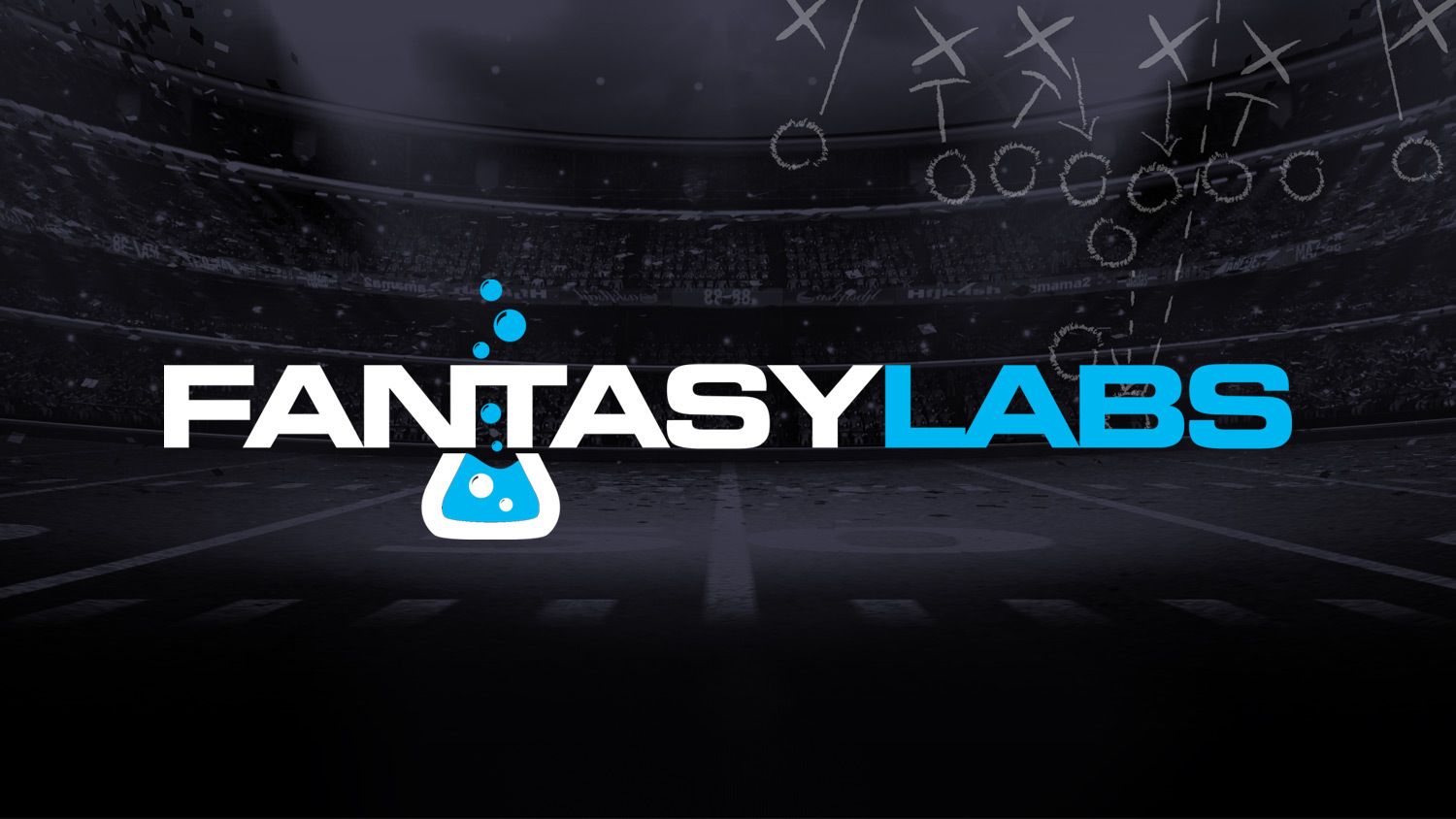Projecting line play — or the line’s impact on fantasy scoring — is one of the more challenging tasks in all of DFS.
While quantitative measures exist, they can be lacking to an extent. On the player level, grading services like Pro Football Focus are notoriously challenged with offensive line play. It’s difficult to know which member of a line blew an assignment, for example.
Things are a bit easier on the team level, as assessing the unit’s overall success is more practical. From Week 5 on, I will be basing these selections almost entirely on Football Outsiders data, including pressure rate and adjusted line yards.
For the playoffs, we’ll be switching things up a bit. With less teams in play, we’ll focus on the top run blocking matchup, top pass blocking matchup, and best overall defensive spot to help with the core of your DFS lineups. Also keep in mind, the color scale is based on the average data from the full season, including non playoff teams. It’s telling that six of the eight teams have average or above pass blocking matchups, but only three are average or above in the ground game.
The Data
Below is a table featuring every playoff offense’s combined adjusted line yards and adjusted sack rate combined with the opposing defensive units. Adjusted line yards are a Football Outsiders statistic that quantifies how much of a team’s rushing yards gained/allowed are attributable to the offensive or defensive lines. Adjusted sack rate measures sacks against down-and-distance rates to quantify how many more or fewer sacks on average a team is recording/allowing.
With adjusted line yards, higher numbers are better for the offensive unit. With adjusted sack rate, lower numbers are better. Both factors should be considered though. For example, a running back will score more fantasy points on average when his team’s passing attack is functioning well, and vise-versa for quarterbacks.
Starting in Week 5, these numbers became matchup adjusted, which should make them far more efficient. Each week, they become slightly more predictive. However, they don’t take injuries into account, so keeping up on those are important. Also, keep in mind that adjusted sack rate takes into account sacks, not pressures.
Therefore quarterback play heavily influences the offensive side of the statistic.

Strong Offensive Line Matchups
Philadelphia Eagles OL (#1 in Combined Line Yards, #5 in Combined Sack Rate) vs. New York Giants DL
The Eagles are one of the league’s best run-blocking units, ranking sixth overall. That’s solid on it’s own, but more important is the Giants’ futility at stopping the run. They rank 30th in adjusted line yards and dead last in DVOA against the run.
Of course, the more pressing question is whether to roster Jalen Hurts ($7,600) or running back Miles Sanders ($5,700). Normally, this split between run and pass blocking would tilt in the running back’s favor, but it’s a bit tougher with Hurts at QB.
Hurts is obviously a great play, but I might opt for Sanders this time. The Eagles are favored by more than a touchdown, and Hurts’ rushing production drops off in games controlled by Philadelphia. He’s averaging just over seven carries in double-digit wins, compared to 13.5 in all other situations. If rostering Hurts, I’d build lineups around the scenario of the Giants keeping things close.
Sanders also had his best game of the season in the last meaningful matchup against the Giants. He posted a 144/2 line on 17 attempts, adding an additional catch. He’s the clearest path to victory for the Eagles here — who may want to continue to protect Hurts for closer games.
Kansas City Chiefs OL (#3 in Combined Line Yards, #1 in Combined Sack Rate) vs. Jacksonville Jaguars DL
The Chiefs’ offensive line has been awesome in pass protection all season and a big part of why Patrick Mahomes ($8,000) was able to lead the league in both passing yards and touchdowns this season despite the loss of top weapon Tyreek Hill.
The Jaguars’ pass-funnel defense shouldn’t interfere much with that this week. They rank 30th overall against the pass, with the 29th-ranked pass rush in the league. They’ve done far better against the run, making the way forward clear for Mahomes.
While the 8.5-point spread might scare some people away, teams tend to be far more aggressive with a lead in the playoffs. They’ll likely get in front on the strength of Mahomes’ passing and stay there based on him continuing to push the ball.
He’s the top choice at quarterback this week, paired with any combination of receivers — this is also another reason to roster Sanders over Hurts at quarterback.
Strong Defensive Line Matchups
Philadelphia Eagles DL (#1 in Combined Sack Rate) vs. New York Giants OL
There are five defenses within $400 in salary and one point of projection in our models for the divisional round. While Philadelphia ($3,200) (as of Wednesday) has the lowest projection of the group, they’re actually my favorite of the bunch.
The stack with Sanders is one reason — since defenses correlate more heavily with running backs than any other position. The bigger reason is their pass rush, which was the best in the league by a wide margin this season. They led the NFL in both adjusted sack rate and actual sacks.
Not counting the relatively meaningless (for the Giants) Week 18 matchup, the last time these teams squared off, Philadelphia picked up seven sacks and a turnover. While that’s a lofty expectation, the combination of line play and expected game script is the slate’s best.






